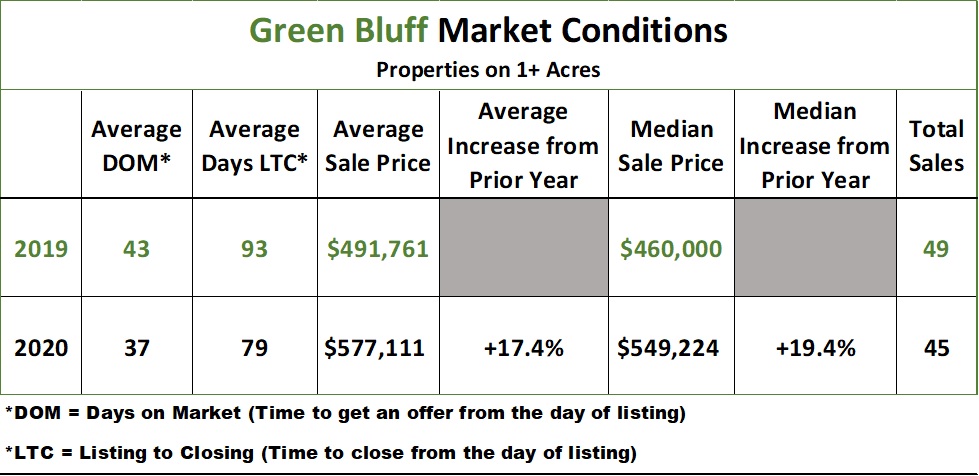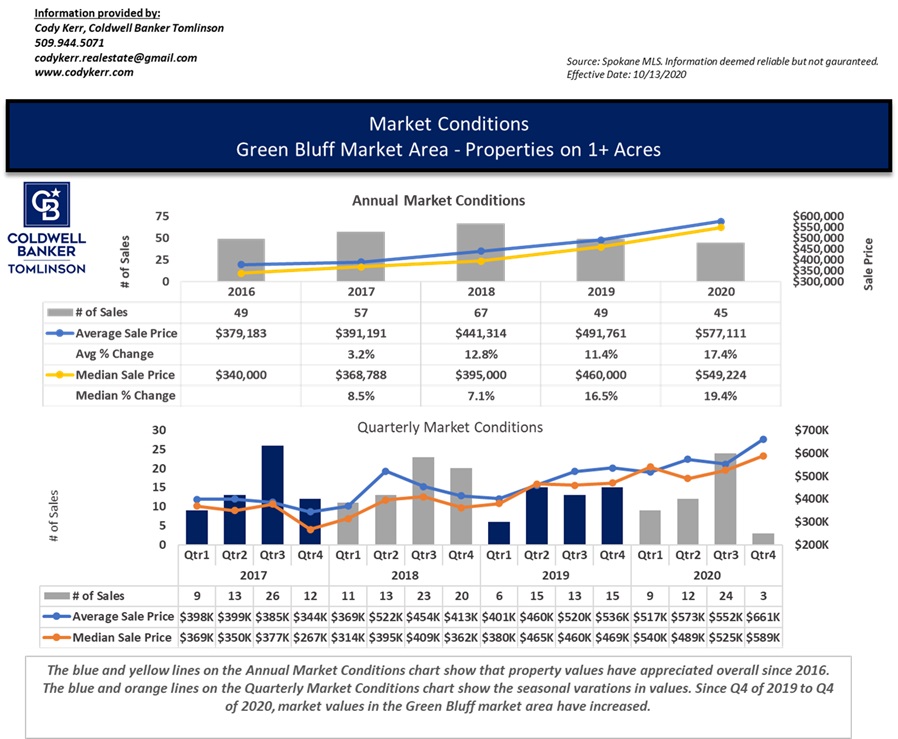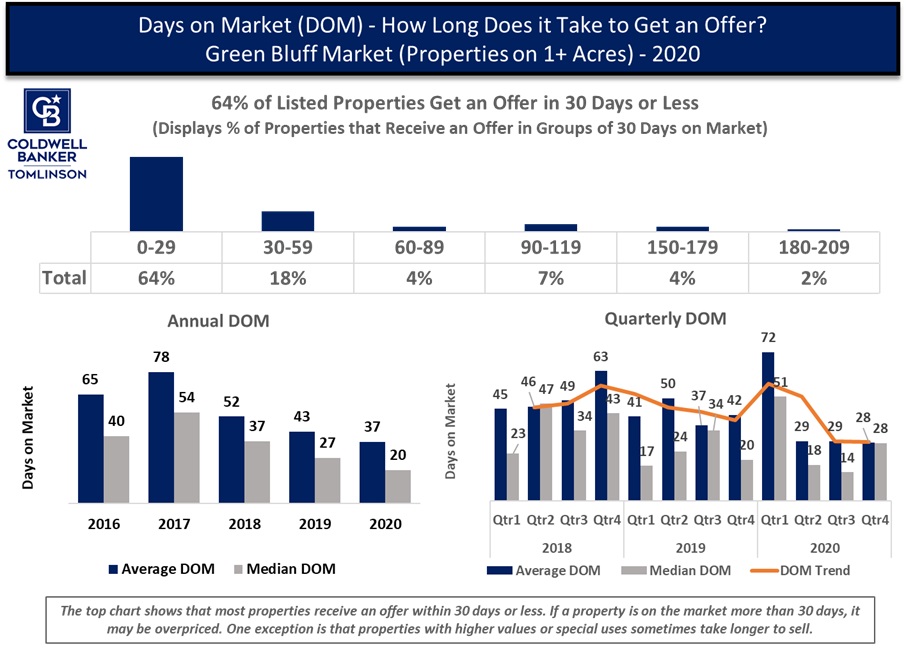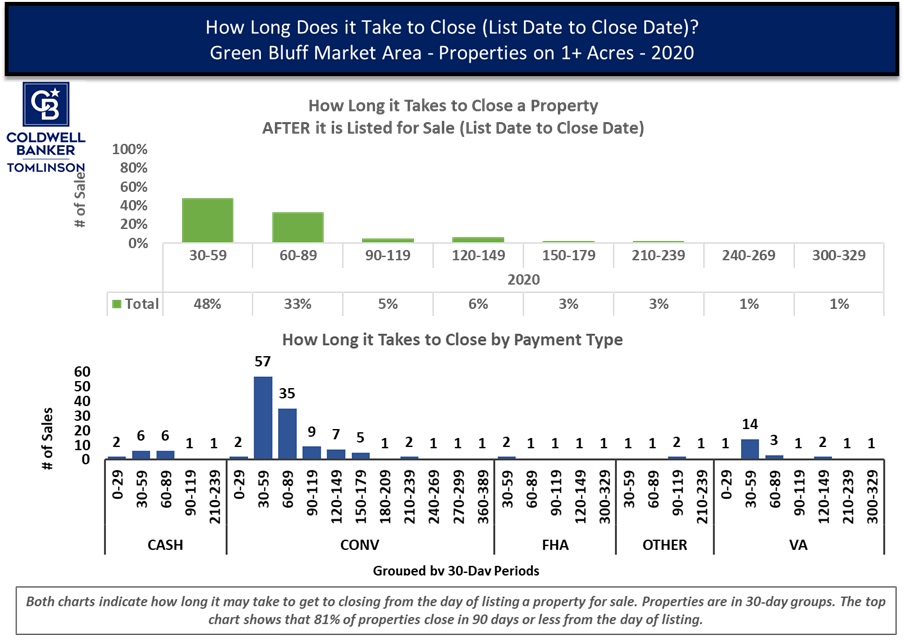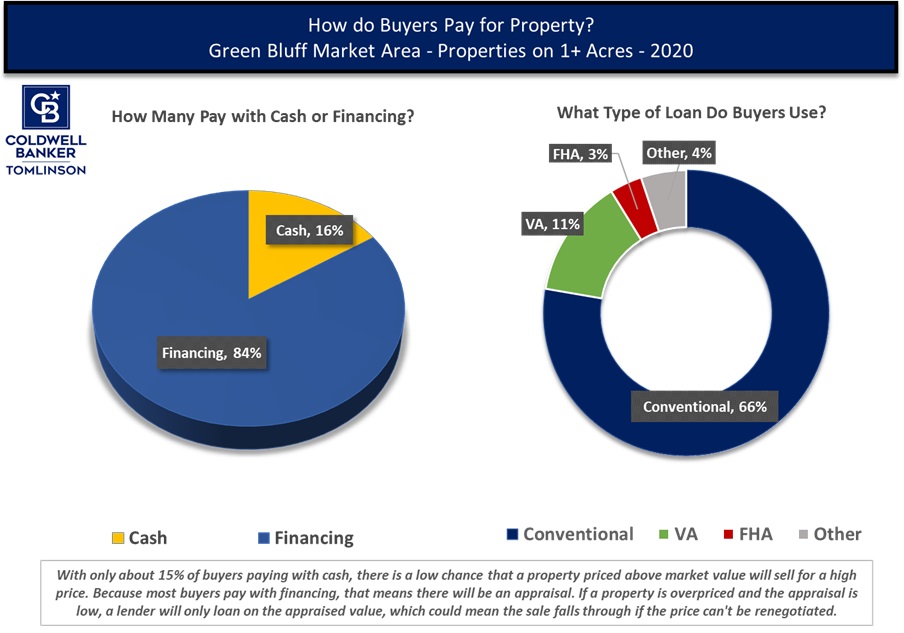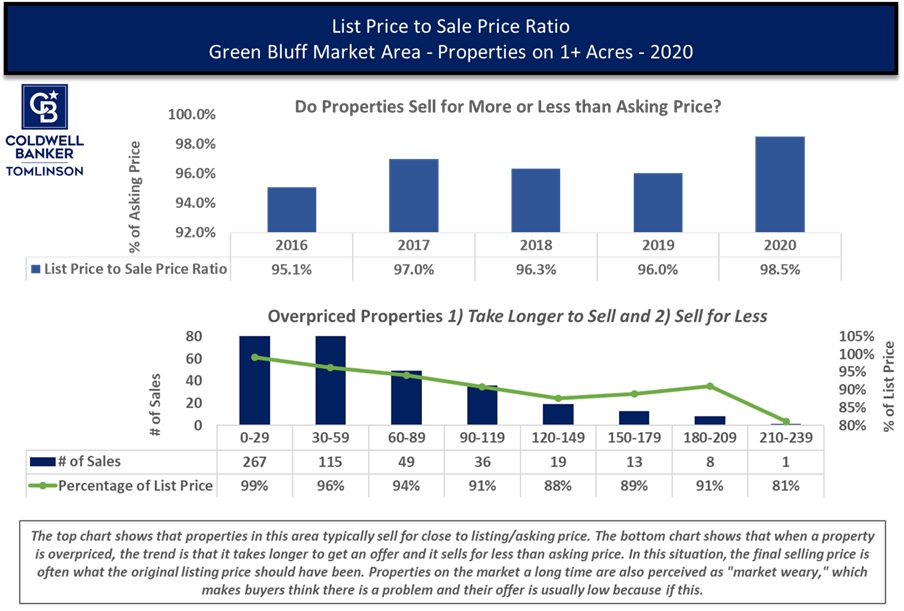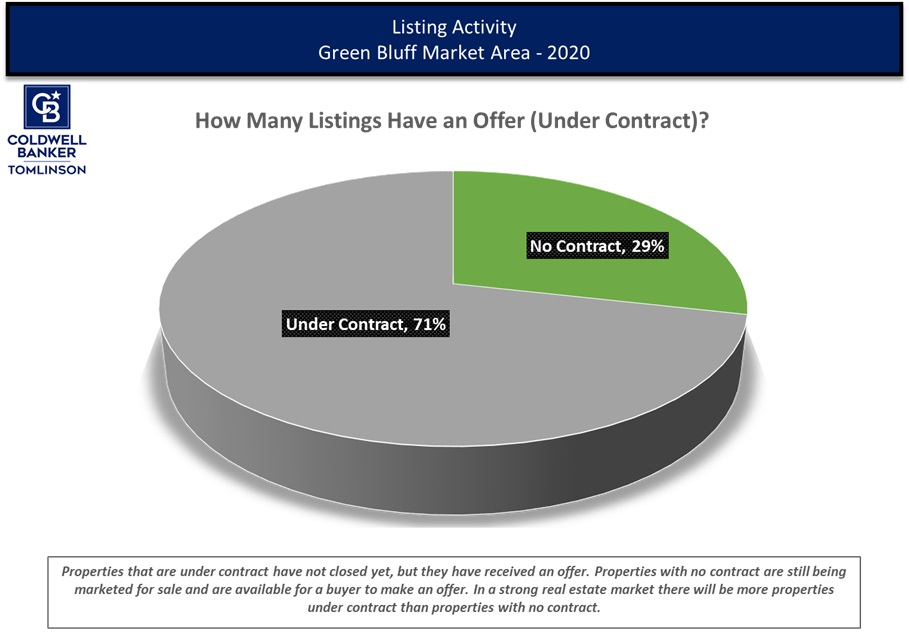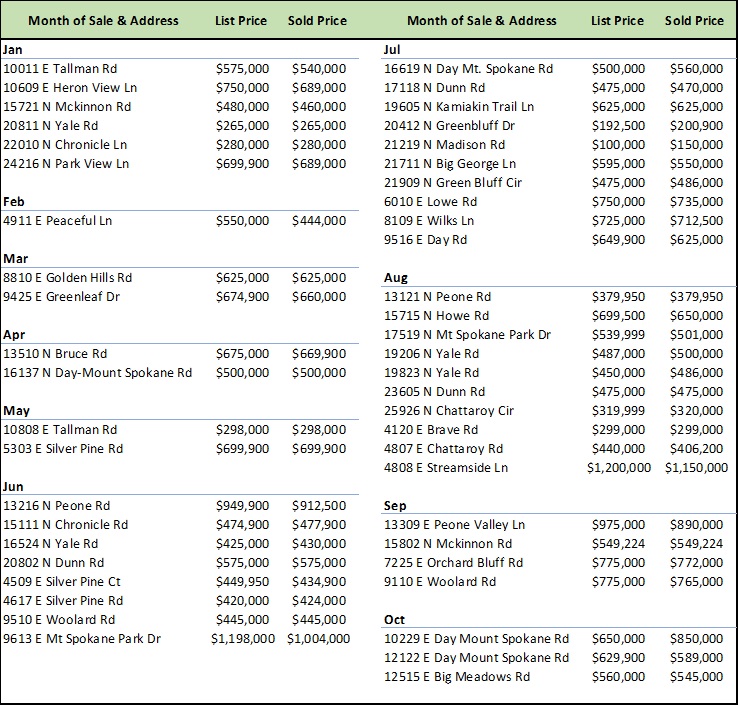Green Bluff Real Estate Newsletter – Fall 2020
This article of the Green Bluff real estate newsletter Fall 2020 highlights the impacts of the Covid-19 pandemic on real estate.
Interested in keeping up with Green Bluff farming and events? Check out the Green Bluff Growers here: Green Bluff Growers
COVID-19 Market Impacts
COVID-19. Is it real? Yes. Is it something we should consider? Yes. Beyond that, there is debate on both sides of the fence, and I’m not here to tell you which side to choose.
The Crystal Ball . . .
By now, we’ve probably heard enough to choose our own response. What is for sure, our world, nation, state, and individual lives have been affected with changes none could have anticipated. Are these changes permanent, temporary, a little bit of both? Probably a little bit of both. I can’t tell you what is to come, as these are unpredictable times. Can anybody predict anything with certainty? Not really. But, short of making accurate predictions, we can make a plan. An old saying I’ve heard is really appropriate, “Hope for the best, plan for the worst.” The takeaway…..MAKE A PLAN!
Many of you have called to ask me, “Cody, what is the market going to do in the next year?” In the past, I could estimate with some confidence based on historic real estate market cycles. It’s a bit like predicting weather patterns for the next year in Spokane. Winter – cold, maybe snow, maybe not. Spring – still cold, rain, warm at times. Summer – drier, warm, possible drought, cool evenings. Fall – rain starts again, cooler, some warm weather. Pretty specific, right!? Ha! At least generally specific. But predicting real estate cycles this time isn’t as simple as looking at historical patterns. This year is different.
What’s on the Horizon?
With upcoming elections and a declared pandemic that still has effects, whether health or economic, most folks don’t know what to expect. Many thought COVID would slow down real estate, or worse, collapse the market. Contrary to what was expected, the market has THRIVED for sellers. Property values are up and competing for properties is now pretty standard. Record low loan rates are also driving sales and appreciation in the market. Loan rates at the time of writing this article are as low as 2% interest rates! Not selling? Now may be the time to refinance.
Real estate isn’t just about buying or selling. So, what else is it? A lot of things! Just like any investment, you’d want an update of how the market is doing. You’ll get the essentials later, but first, I’ll give you some of the “what else” about real estate in this edition too.
The “What Else” – Potential Property Tax Reductions
Remember that whole thing about, “Make a plan”? Owning real estate is also about planning. While you own property, not only do you have to manage the physical aspects that you can touch, you have to manage the conceptual aspects too. Property tax is of those concepts.
Open Space Taxation Act
History
Taxes, I know, just about as tense of a topic as COVID right now. But this will be good news for many of you. Ever hear of the Open Space Taxation Act (OSTA)? Don’t check out yet. I won’t bore you with the nitty gritty. However, there are some important benefits, and many property owners are missing out.
The OSTA was enacted in 1970 in Washington state. Basically, it allows property owners to reduce property taxes if their property meets certain requirements. See! Something interesting. Less in taxes!
Property Use Options
The OSTA allows a property to be taxed according to its “current use” rather than its “highest and best use.” What’s that mean? In real estate lingo, the “highest and best use” results in the most property value – usually residential or commercial use. But, a property may have a “current use,” such as farming or forest land that doesn’t produce the highest real estate value, and an owner could instead choose to have the property taxed according to the “current use” if the property qualifies.
Residential or commercial tax status pretty much results in the highest property taxes. Some properties qualify for what’s called “open space,” “farm and agricultural,” or “timber land.” A property could be designated as just one of these or a combination. The result of meeting these requirements? Reduced property taxes.
Considerations for Tax Designation Changes
There are some hitches though. Not every property qualifies for one of the designations. Each program has certain requirements. For example, agricultural designation has a minimum acreage and income per acre requirements. Designated forest land also has a minimum acreage requirement plus the need to have a forest management plan. These are just a couple examples. Each property needs to be evaluated from two perspectives:
1) County Review – The Current Use Department needs to determine if a property qualifies and then assess what needs to happen to put the property into one or more programs.
2) Long Term Planning – A property owner needs to consider the requirements, benefits, long term use, and potential consequences of placing a property into the program or removing it in the future.
While adding property to the program has benefits, there can also be consequences. The main negative consequence is if a property is being taxed according to its current use and an owner wants to put it back into its “highest and best use,” there is a penalty. The penalty amounts to paying back taxes for the last seven years based on the current market value, which sometimes can be thousands of dollars.
All said and done, this isn’t a quick decision. There are consequences, but there are benefits too. Many property owners already qualify for an agriculture or timber land designation, or both, and could be saving on property taxes, but their property is being taxed according to its “highest and best use.” With the OSTA programs, a property owner’s planning involves two consultations: 1) The county assessor, and 2) Your real estate agent.
If you don’t already have an agent you’re working with, I can consult with you about some of the real estate considerations. I can also either put you in touch with the assessor to complete the process on your own, or I can assist you with completing the process. Let me know if you’d like an OSTA pamphlet with more details, and I’ll email it to you.
Market Snapshot
Since 2019, property values have increased about 18% in the Green Bluff market. COVID-19 events, contrary to expectations, have caused the market to thrive. The market has been so strong that many listings are selling above asking price and getting offers in record times! It’s taking an average of just over a month or less for most properties to get an offer, and it’s about 2.5 months from the day of listing to closing to get your proceeds.
If you’re thinking about selling, now might be a better time than ever to capture that price you’ve been hoping for. If you have questions about the market and would like to know more about how to make a plan for your real estate goals, let chat soon.
Green Bluff Sales in 2020 – Properties on 1+ Acres
Spokane & Green Bluff Market Information
Interested in keeping up with other details of Spokane real estate? Check out the Spokane Association of Realtors.
Want the latest market information? Sign up for Market Reports.
Interested in new listings that hit the market? Sign up for New Listings.
Search for Green Bluff Homes for Sale.

